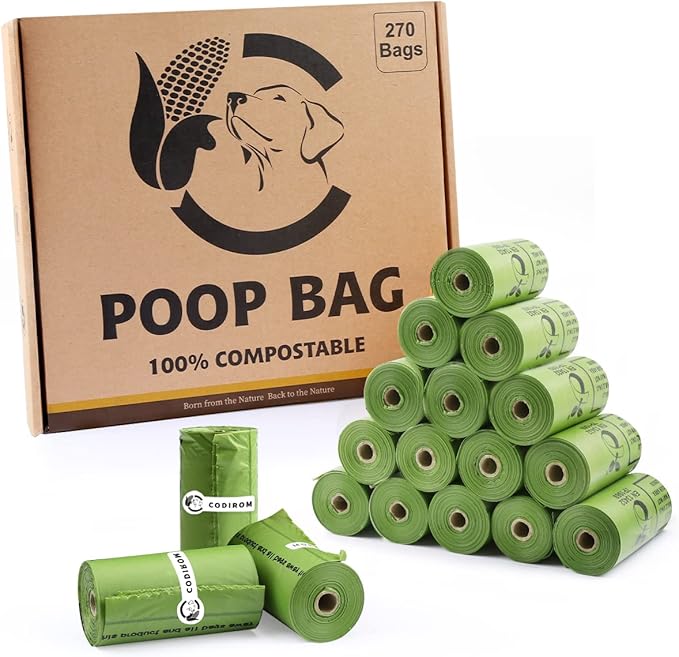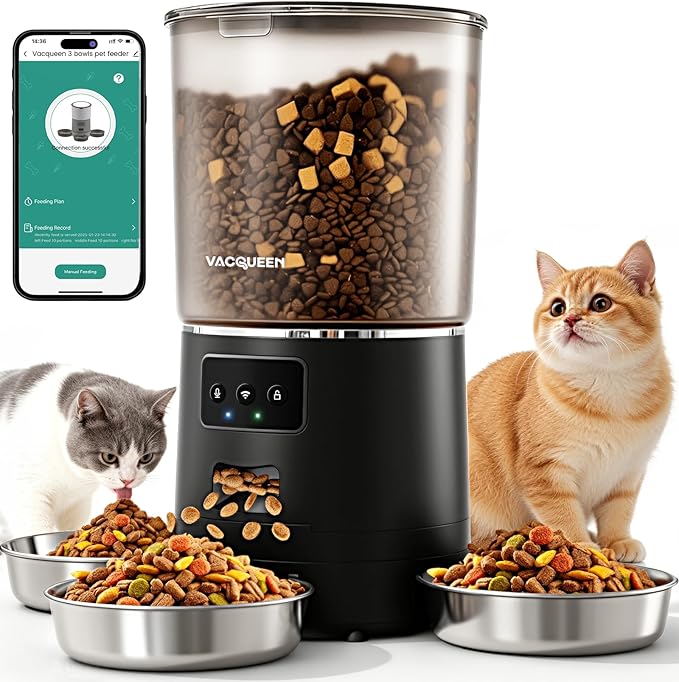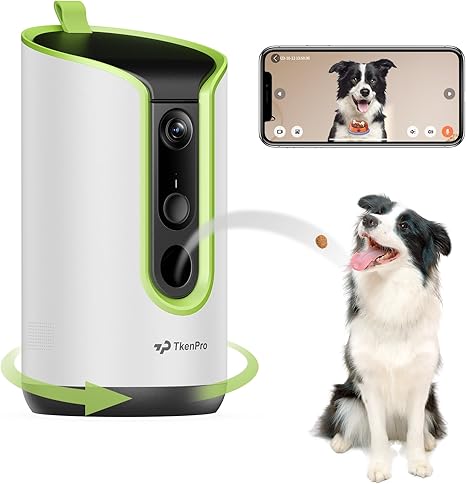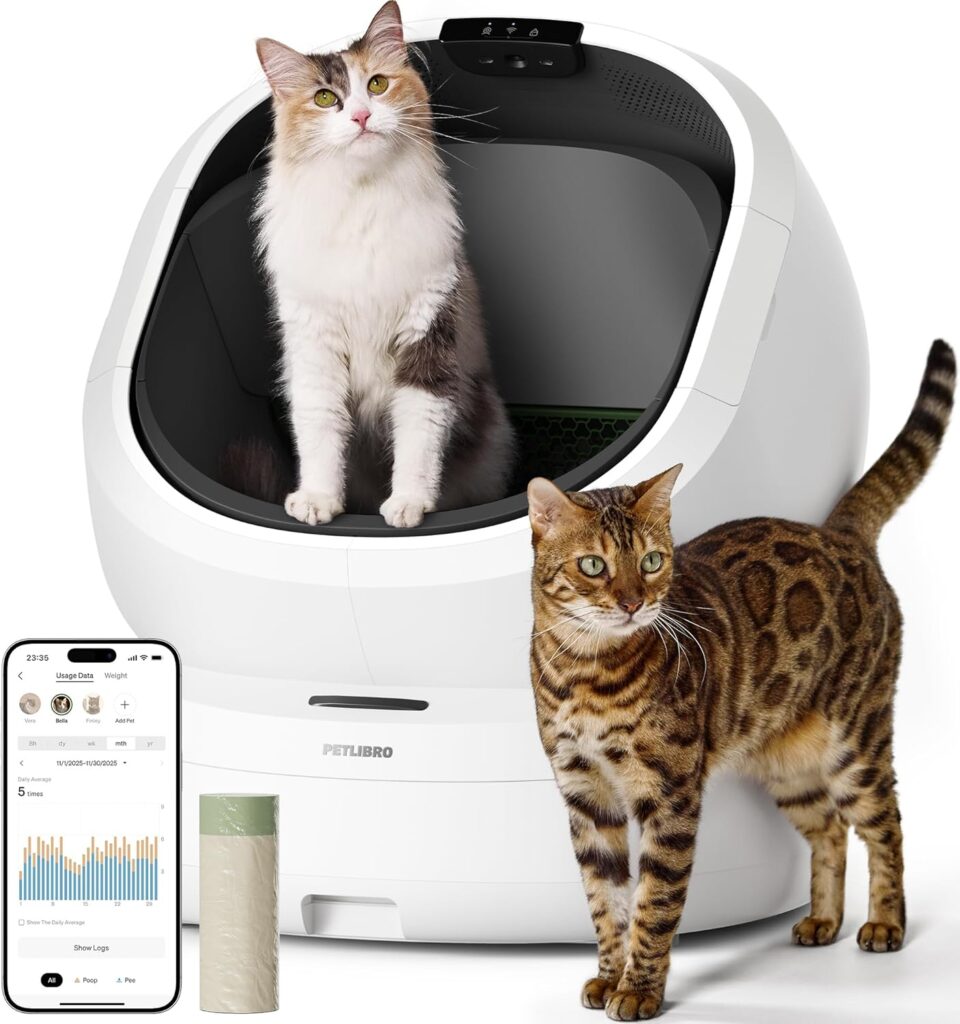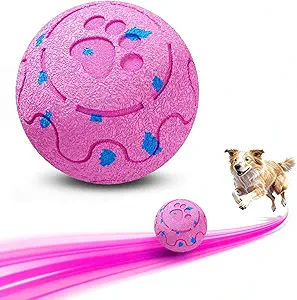Introduction: How To Properly Dispose Of Biodegradable Pet Waste Bags: A Complete Guide for Eco-Conscious Pet Owners
Every walk with my furry friend is a reminder of the responsibility I carry—not just for their well-being, but also for our environment. In this comprehensive guide, I explain how to properly dispose of biodegradable pet waste bags while embracing eco-friendly habits that benefit our planet. This isn’t just about choosing a sustainable bag; it’s about understanding the entire lifecycle of the product and making informed decisions every step of the way. Let’s break down the science, share real-life experiences, and offer practical insights into biodegradable waste management. If you’re looking for straightforward, actionable advice in a style reminiscent of Seth Godin’s direct approach, you’ve come to the right place.
Understanding Biodegradable Pet Waste Bags: Science, Sustainability, and Real-World Impact
What Does “Biodegradable” Actually Mean?
Before diving into the details of proper disposal, it helps to understand what “biodegradable” truly means. In essence, a biodegradable product is engineered to break down naturally over time, thanks to the action of microorganisms such as bacteria and fungi. However, this process is influenced by several factors:
- Material Differences: Products made from PLA (Polylactic Acid), PBA (Polybutylene Adipate-co-Terephthalate), or even recycled paper all have unique decomposition profiles.
- Certification Standards: Look for certifications such as ASTM D6400 or EN13432. These guarantee that the bag meets specific compostability standards.
- Decomposition Conditions: Temperature, moisture, and oxygen exposure are key. In environments like a commercial compost facility, conditions are optimal, whereas a landfill might not offer the same ideal circumstances.
This knowledge transformed how I approach waste disposal. It’s not enough to simply choose a biodegradable option; proper disposal is essential for the product to perform as intended. Without the right conditions, even the best bags can fall short in their decomposition promise.
Material Science Meets Eco-Friendly Pet Care
Understanding the nuances of biodegradable materials has also allowed me to connect more deeply with environmental science and the importance of sustainability. When a biodegradable bag is disposed of in an environment that supports its breakdown, it returns to nature without leaving harmful residues. However, if placed in suboptimal conditions, the benefits can be greatly reduced. This is critical when considering overall environmental impact and the health benefits for our pets and communities.
My Journey Towards Proper Disposal of Biodegradable Pet Waste Bags
Learning Through Trial and Error
My early experiences taught me hard lessons about pet waste management. I initially believed that simply tossing biodegradable bags into the regular trash would suffice. Over time, I realized that landfills often do not provide the optimal conditions for these bags to break down efficiently—namely, proper air and moisture levels. This realization spurred me on a path of relentless research and adaptation.
Questions like “Is composting a viable alternative?” and “What do local regulations dictate?” guided my journey. I experimented with various disposal methods until I developed a robust routine that minimizes environmental impact while ensuring ease and safety. The journey has been as educational as it has been transformative, and I now incorporate lessons from both science and personal experience in every decision I make.
Real-World Testing: My 5-Year-Old Golden Retriever’s Experience
One example that stands out in my journey was our experience with Max, our spirited 5-year-old Golden Retriever. Max is a lively companion whose very presence motivated me to pursue better waste management practices. When I first introduced biodegradable pet waste bags into our routine, I noticed that not only did the bags perform well during our walks, but they also received positive feedback from fellow pet parents during community events.
Max’s enthusiastic acceptance of this eco-friendly approach reminded me that practical solutions can also be delightful. His reaction underscored the point that sustainable choices are beneficial not only for the environment but also for creating a cleaner, healthier space for our pets to enjoy.
Proper Methods for Disposing of Biodegradable Pet Waste Bags: Step-by-Step Instructions
General Trash Disposal: A Practical Approach
Let’s start with the basics of how to properly dispose of biodegradable pet waste bags when using your regular trash system. While it might seem counterintuitive, this approach can still be effective if local conditions are taken into account:
- Seal It Up: After cleaning up your pet’s waste, ensure the bag is tightly sealed to control odors and prevent leaks.
- Check Local Regulations: Many municipalities still require pet waste to be disposed of in general trash. Review local guidelines to stay compliant.
- Landfill Dynamics: Keep in mind that while biodegradable bags will eventually break down in a landfill, the process may be significantly delayed due to limited exposure to oxygen and moisture.
Although this may not be the ideal method for quick decomposition, it remains a necessary option in many locales. It’s all about understanding the trade-offs and making informed choices based on the available waste management infrastructure.
Opting for Composting: Best Practices for Environmentally Sound Waste Management
If your community or local facility offers composting services, this method can be a superior alternative to traditional trash disposal. Commercial composting facilities are designed to provide the optimal conditions required for full decomposition, thereby enhancing the eco-friendly nature of biodegradable bags. Here’s what I learned:
- Facility Availability: Ensure that a commercial composting facility in your area accepts pet waste. Larger cities and eco-conscious communities often have established programs.
- Guideline Adherence: Follow the specific requirements set by the compost facility regarding bag types and waste processing.
- Avoid Home Composting: Despite the appeal of home composting, most systems do not reach the temperatures necessary to safely process pet waste.
This approach not only efficiently disposes of the waste but also contributes to the production of nutrient-rich compost that can benefit local green spaces and community gardens.
Using a Dog Waste Digester: A Modern, Efficient Alternative
Another method I’ve adopted is the use of dog waste digesters. These are essentially mini septic systems designed specifically for pet waste. Here’s how they work and why I recommend them:
- Accelerated Breakdown: A digester speeds up the decomposition process through a controlled environment that encourages rapid microbial activity.
- Odor Control: By confining the waste and managing bacterial breakdown, digesters help reduce unpleasant odors—making your backyard a more welcoming space.
- Low Maintenance: Once set up and stabilized, regular maintenance is minimal compared to other waste management systems.
This system offers a reliable alternative for those who prefer handling pet waste on a smaller, in-home scale while still ensuring that environmental standards are met.
Step-by-Step Instructions for Daily Disposal Routines
Here’s a concise guide to help you establish a daily habit that ensures proper waste disposal:
- Be Prepared: Carry extra biodegradable bags during every outing. Always have a spares pack in your bag or car.
- Secure the Waste: After picking up waste, ensure the bag is tied off securely to prevent any leaks during transit.
- Review Disposal Options: Check if your municipality has specific disposal guidelines. If composting is available, consider using that route.
- Dispose Responsibly: Whether it’s through the regular trash or a composting facility, follow the recommended procedures outlined by local authorities.
- Educate Others: Share your knowledge with neighbors and other pet parents. A single conversation has the potential to spark significant change.
Environmental Impact and Health Benefits of Proper Disposal
The Broader Picture: Why Every Bag Matters
The correct disposal of biodegradable pet waste bags goes far beyond just tidiness. There are important environmental and health implications that make this practice essential:
- Water Pollution Prevention: Incorrect disposal can lead to pet waste being washed into storm drains, thereby contaminating local rivers, streams, and lakes.
- Soil Integrity: Harmful bacteria and parasites can leach into the soil, affecting plant growth and local wildlife health.
- Air Quality: Decomposition of waste releases odors and potentially toxic gases. Proper disposal ensures these emissions remain minimal.
- Public Health: Reducing pet waste in communal areas lowers the risk of spreading pathogens to children and other community members.
Understanding these environmental and health repercussions not only reinforces the importance of proper disposal but also elevates our role in safeguarding community well-being.
Environmental and Animal Health Benefits
Using biodegradable pet waste bags made from non-toxic materials significantly reduces environmental pollution. When disposed of properly—whether through commercial composting, designated waste containers, or a dog waste digester—the risk of harmful chemicals leaching into the soil or water is minimized. Moreover, minimal exposure to pathogens and reduced odors create a healthier, more pleasant space for pets to play and for communities to thrive.
Choosing the Right Biodegradable Pet Waste Bags
Quality Matters: Material, Durability, and Certifications
Selecting the right bag is critical to ensuring that your eco-friendly promise isn’t compromised by a subpar product. Here’s what I look for when choosing biodegradable pet waste bags:
- Material Quality: I favor bags made from PLA or PBA because they offer faster decomposition rates while maintaining durability. Although some recycled paper options are available, they might not always be robust enough for heavy-duty use.
- Reliable Certifications: Always check for certifications like ASTM D6400 or EN13432. These indicators are a strong testament to the bag’s genuine compostability.
- Bag Size and Strength: The size should accommodate the pet’s waste without being overly bulky, and the material should endure typical handling without tearing.
- Dispenser Compatibility: If you employ a pet waste bag dispenser, ensure that the packaging is designed for seamless use.
This thorough evaluation process is my way of ensuring that each product aligns with the broader goals of reducing environmental impact and maintaining a sustainable lifestyle.
User-Friendly Features That Make a Difference
Along with eco-friendly benefits, convenience is also an important factor. Here are a few extra features that enhance everyday use:
- Easy Tear-Off Design: Bags that can be effortlessly torn off without any fuss can save valuable time during busy walks.
- Comfortable Handles: Sturdy handles allow for quick, secure tying, helping prevent any accidental leaks while on the move.
- Odor Control: Some bags incorporate odor-neutralizing agents that further reduce any unpleasant smells, making them ideal for prolonged outdoor activities.
- Cost-Effective Options: Though initially higher in price, buying in bulk or subscribing to service packages can make these bags an economical choice over time.
This combination of user-focused features and environmental benefits makes these bags a smart investment—one that supports a sustainable future while offering excellent practicality.
Debunking Common Myths About Biodegradable Pet Waste Bags
Myth #1: Biodegradable Bags Are Just Like Regular Plastic Bags
It’s a misconception that biodegradable pet waste bags behave identically to traditional plastic bags. Regular plastics can linger in the environment for hundreds of years without breaking down, whereas biodegradable alternatives are engineered to disintegrate under the right conditions. However, these conditions must be met in order for the bags to perform effectively.
Did you know? Even when placed in a landfill, biodegradable bags will eventually break down—but at a slower pace due to the reduced availability of oxygen and moisture.
Myth #2: All Biodegradable Bags Break Down Quickly
The perception that every biodegradable bag will rapidly vanish is misleading. In reality, many such products require specific high-temperature and high-moisture conditions—commonly found in commercial composting facilities—to decompose at an optimal rate. When disposed of along with regular trash, the breakdown process is substantially slowed.
Keep in mind: Always read the product specifications and disposal guidelines to understand what conditions are necessary for efficient decomposition.
Myth #3: Biodegradable Bags Eliminate All Pollution
While these bags are a cleaner alternative compared to conventional plastics, they are not a perfect solution by themselves. If disposed of improperly, even the best biodegradable product can contribute to environmental pollution. The benefits are maximized only with correct disposal methods.
Remember: The true environmental improvement hinges on the correct disposal process, which works in tandem with the biodegradable materials.
Myth #4: Home Composting Is a Suitable Option for Pet Waste Bags
Many mistakenly believe that tossing biodegradable pet waste bags into a home compost pile is sufficient. In most cases, home composting systems do not reach the necessary temperatures or maintain the ideal conditions needed for the complete breakdown of pet waste. This can lead to lingering pathogens and only partial decomposition.
Tip: For effective results, follow the manufacturer’s guidelines and consider commercial composting alternatives when available.
Myth #5: Biodegradable Bags Are Too Expensive
While it is true that eco-friendly options may have a slightly higher upfront cost, the market is gradually narrowing this gap. Over time, buying quality biodegradable waste bags – especially in bulk or via subscription services – offers long-term savings along with substantial environmental benefits.
Note: Investing in quality biodegradable waste bags today translates into both financial and environmental gains over the long run.
Myth #6: Biodegradable Bags Are Only Suitable for Pet Waste
Although these bags are optimized for pet waste, their design can also handle other organic wastes such as yard clippings or food scraps. Their versatile nature means they can be integrated into a broader low-waste strategy at home.
Example: I have occasionally used them to collect garden trimmings, which I then send for professional composting, reinforcing a cycle of reuse and natural breakdown.
Myth #7: All Biodegradable Bags Are Created Equal
Not every bag on the market meets the same standards. Differences in composition and additives can greatly affect the rate and completeness of decomposition. It’s always advisable to do a bit of research, review certifications, and check community feedback before making a purchase.
Advice: Opt for products backed by recognized certifications and positive real-life reviews from other eco-conscious pet parents.
Local Regulations and Guidelines for Responsible Pet Waste Disposal
Navigating Local Pet Waste Disposal Rules
Regulations for disposing of pet waste can differ dramatically depending on your locale. I make it a habit to check local websites and municipal guidelines to ensure I remain compliant with current environmental policies. Here are some common points I always verify:
- Immediate Cleanup Protocols: Many cities require that waste be removed promptly to lower health risks and environmental contamination.
- Designated Disposal Facilities: Some regions offer dedicated pet waste receptacles or even specialized composting services designed for pet waste.
- Bag Requirements: There are often local incentives or mandates for using biodegradable bags to promote a cleaner environment.
- Enforcement Measures: Knowing which local department—often public works or animal control—oversees these regulations helps me stay on track.
Choosing the Best Disposal Method for Your Community
The ideal disposal method is ultimately determined by your local infrastructure and guidelines. In some areas, disposing of a securely closed bag in general trash is perfectly acceptable. In other regions, community composting services or designated pet waste bins can offer a more sustainable option. Consider these scenarios:
- General Trash Disposal: When no specific guidelines are provided, sealing the waste in a biodegradable bag before placing it in your regular trash is typically acceptable.
- Commercial Composting: Urban areas with mature composting infrastructures usually support better decomposition, making this a more environmentally friendly option.
- Public Disposal Stations: Some neighborhoods install special bins for pet waste, which streamline the process while enhancing local cleanliness.
Tips for Implementing Responsible Pet Waste Management and Community Action
Daily Routines for Sustainable Waste Management
Establishing a reliable routine has drastically improved how I manage pet waste. Here are some concrete, step-by-step actions I use every day:
- Keep Extras at Hand: Always carry a spare roll of biodegradable pet waste bags. You never know when your neighbor might need an extra one.
- Secure the Bag: After picking up waste, tie the bag tightly to prevent any accidental leaks or spills.
- Double-Check Local Guidelines: Before disposing of the waste, review your local regulations. Staying updated ensures that you’re making the most eco-friendly and compliant choice.
- Participate in Community Events: Join clean-up initiatives or local environmental workshops. These gatherings not only help maintain public spaces but also spread awareness about responsible disposal practices.
- Share Your Experience: Engage in conversations with fellow pet lovers, either face-to-face or on social media, to spread the word about sustainable waste practices.
Pros & Cons of Various Disposal Methods
I’ve weighed the benefits and drawbacks of different disposal methods. Here’s a concise breakdown:
- General Trash Disposal:
- Pros: Simple, accessible, aligns with many local guidelines.
- Cons: Decomposition is slower due to suboptimal landfill conditions.
- Commercial Composting:
- Pros: Optimized conditions lead to quicker decomposition; transforms waste into nutrient-rich soil.
- Cons: Availability depends on local facilities; may require extra effort to locate a service.
- Dog Waste Digester:
- Pros: Accelerates waste breakdown at home; reduces odor and provides a controlled environment.
- Cons: Requires installation and periodic maintenance.
